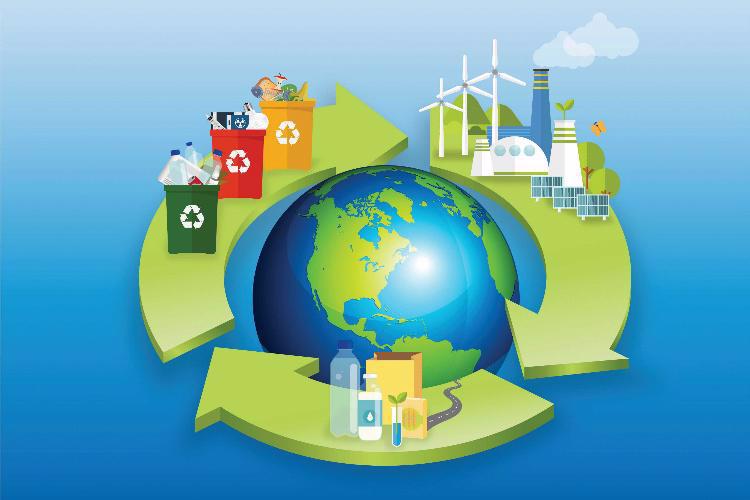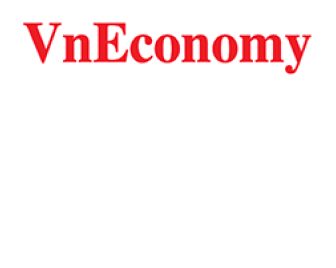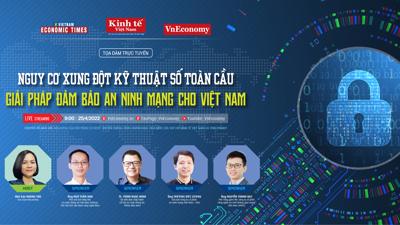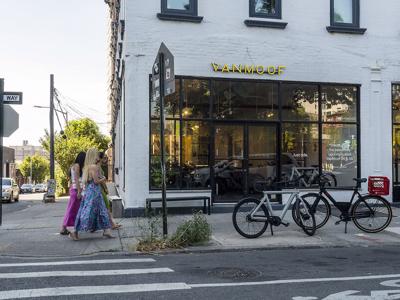Circular economy in Vietnam’s construction industry
Circular economy principles would greatly help Vietnam address issues surrounding the effect of construction and demolition waste on the local environment.

The construction industry plays a crucial role in global economic and social development while also being one of the largest contributors of solid waste. Construction and demolition waste accounts for approximately 30 per cent of all global solid waste, placing significant pressure on natural resources and the environment. In 2020, the world generated 2.24 billion tons of solid waste, with construction and demolition waste accounting for the majority. China, the US, and the EU are the three largest emitters. In 2014, China alone generated 1,130 million tons of construction and demolition waste, the US 534 million tons, and the EU 333 million tons.
Construction and solid waste recovery rates vary widely across regions, ranging from 7 per cent in areas with inadequate management systems to 90 per cent in regions with advanced policies, such as the EU. Globally, about 35 per cent of construction and demolition waste is disposed of in landfills despite 75 per cent of this waste having recyclable potential. This practice not only squanders resources but also exacerbates environmental pollution.
The circular economy offers a key solution to mitigating the adverse impacts of construction and demolition waste. In the construction industry, the circular economy focuses on reducing waste generation, reusing materials, and recycling construction and demolition waste into new raw materials. This approach conserves resources and minimizes greenhouse gas emissions. According to the 3R principle (Reduce, Reuse, Recycle), the circular economy model transforms the industry from a linear system of “extract, produce, dispose” to a sustainable framework, creating long-term economic opportunities through resource optimization. Implementing the circular economy in construction conserves natural resources, reduces reliance on landfills, creates jobs, and lessens environmental pollution, thereby enhancing the quality of life. However, circular economy adoption faces barriers such as high cost, lack of infrastructure, and low awareness about the value of construction and demolition waste.
A key driver of the global rise in construction and demolition waste is rapid urbanization. For example, China’s urban population increased from 35.88 per cent of its total in 2000 to 61.43 per cent in 2020, spurring a surge in construction and demolition activities. In countries such as the UK and Australia, about 44 per cent of construction and demolition waste is sent to landfill, compared to 40 per cent in Brazil and 29 per cent in the US. Landfill not only wastes resources but also leads to soil and water contamination and toxic gas emissions. Recovery rates vary significantly: the EU achieves 90 per cent due to advanced policies and technologies, whereas China’s rate remains below 10 per cent. This disparity underscores the need for improved construction and demolition waste management to boost economic efficiency and reduce environmental harm.
Applying circular economy principles in construction involves the foundational 3R framework. Eco-design is vital in reducing construction and demolition waste at the planning and construction stages. Reusing materials such as steel, concrete, and wood cuts waste and conserves resources. Recycled construction and demolition waste can be used to produce unburnt bricks, recycled concrete, and other building materials, alleviating the demand for virgin resources. The benefits of the circular economy extend beyond environmental gains to economic opportunities. Recycling and reuse cut raw material import costs, enhance the value of by-products, and generate jobs in recycling and waste management. Socially, the circular economy reduces public health risks by decreasing pollution and improving waste management.
An important tool supporting the circular economy in construction is the waste hierarchy, which prioritizes options from prevention, reduction, reuse, and recycling to disposal. The EU’s Waste Framework Directive exemplifies this approach, promoting circular construction and demolition waste management strategies. Key measures include a recycling target of at least 70 per cent of construction and demolition waste by 2020, financial incentives for recycling businesses, and the adoption of advanced technologies like Material Flow Analysis (MFA) to optimize recycling processes.
Current status, policy orientation, and opportunities
Boosting the circular economy in Vietnam’s construction industry is a necessary solution to address environmental and resource challenges in the context of rapid urbanization and increasing construction demand. The Vietnamese Government has been developing numerous policies and programs to promote the circular economy within the construction sector. Green urban development is being advanced through standards and norms for green materials, green buildings, and energy-efficient structures. The circular economy is increasingly integrated into Vietnam’s sustainable development and green growth goals, supported by research programs aimed at creating environmentally-friendly construction materials, digital waste management systems, and smart, sustainable urban infrastructure. The government emphasizes transitioning towards a green economic model by using resources efficiently, developing sustainable infrastructure, and leveraging digital technologies to improve growth quality and reduce environmental impacts.
The plan for the sustainable development of smart cities during 2018-2025, with a vision towards 2030, highlights the application of modern technologies and smart solutions to enhance urban management, reduce the environmental impact, and optimize resource use and construction waste. Centered on people and leveraging scientific and technological advancements, the plan aims to maximize land, energy, and resource efficiency, contributing significantly to the national green growth strategy and sustainable development goals.
Framework policies are being developed to ensure consistency in managing construction waste, water supply and drainage, transportation, and energy in smart cities. Pilot cities have implemented urban spatial data infrastructure and data integration systems, consolidating land, construction, and environmental data on GIS (geographic information system) platforms. These systems support better urban management, decision-making in urban planning, and efficient resource utilization while minimizing construction waste.
Specific initiatives, such as waste treatment, smart lighting, and traffic management, have been rolled out in at least six cities in Vietnam’s key economic regions, including Hanoi, Ho Chi Minh City, Da Nang, and Can Tho. Such efforts underline the plan’s commitment to sustainable urban development and smart city innovation.
Despite these advancements, promoting the circular economy faces challenges, including limited recycling technology, lack of infrastructure, and low public awareness about the benefits. Vietnam aims to enhance training and capacity-building for agencies and businesses, ensuring that all pilot cities have the capability to implement smart and sustainable urban solutions. By 2030, the country seeks to complete the first phase of pilot projects, forming a nationwide smart urban network with core centers in Hanoi, Ho Chi Minh City, Da Nang, and Can Tho. Integrating smart urban development with the circular economy will alleviate environmental pressures, promote sustainable construction practices, foster green economic growth, and enhance quality of life.
Decision No. 2149/QD-TTG TTg, approved by the Prime Minister, outlines the National Strategy on Integrated Solid Waste Management to 2025, with a Vision to 2050. By 2025, the strategy aims for 100 per cent of ordinary industrial solid waste from production, business, service establishments, and craft villages to be collected, recycled, or reused to meet environmental protection standards. Additionally, 80 per cent of ash, slag, and gypsum from power plants, chemical plants, and fertilizer factories is targeted for reuse as raw materials in construction or site clearance activities.
In the field of construction and demolition waste, 90 per cent of urban waste is to be collected and treated to meet environmental standards, but only 60 per cent is currently reused or recycled into new products and materials. This leaves significant potential for improvement compared to developed regions like the EU or Japan, where recycling rates reach 85-90 per cent.
Barriers to achieving higher recycling efficiency include outdated recycling technology, insufficient infrastructure, and limited awareness among businesses and communities about the economic and environmental benefits of waste reuse. Addressing these challenges is crucial for aligning with international best practices and optimizing resource recovery.
The circular economy in the construction industry optimizes resource use while creating economic and social opportunities. Recycling and reusing construction waste reduces demand for raw materials, lowers import costs, and eases landfill pressure. Recycled products like unburnt bricks, recycled concrete, and ash-based materials not only meet environmental standards but also lower production costs. Additionally, the recycling industry generates thousands of jobs in recycling, waste management, and technology development.
However, challenges such as high initial investments, inconsistent policies, and limited technological capacity must be addressed. Key solutions include establishing modern recycling plants with advanced technologies, offering financial incentives like tax reductions and green credit, and encouraging business participation in the circular economy. Raising public awareness and training specialized human resources are equally essential to meet the sector’s growing demands.
The circular economy will play a central role in advancing the sustainable development of Vietnam’s construction industry. Continued international cooperation can help it learn from advanced countries like the EU, Japan, and South Korea and replicate effective waste management models. Integrating digital technology and AI into waste management will enhance efficiency and ensure the construction industry meets economic growth targets while protecting the environment, reducing carbon emissions, and improving quality of life. With robust policies and active collaboration between businesses and communities, Vietnam’s construction sector can lead the transition to a circular economic model, paving the way for a greener and more sustainable future.
Solutions to consider
The construction industry faces numerous barriers to implementing the circular economy, especially in developing countries like Vietnam. Recycling costs are often higher than landfill disposal, making it less attractive for businesses to invest. Advanced technological solutions, such as automation and AI for sorting and processing construction and demolition waste are not yet widely deployed. Moreover, low awareness about the long-term benefits of the circular economy poses a significant challenge, requiring education and public awareness campaigns. To overcome these obstacles, countries need to heavily invest in technology, develop supportive policies, and foster international cooperation to share experiences and best practices.
Urban planning and building design using an ecosystem-based landscape approach
This approach is becoming inevitable in sustainable development. It integrates natural elements into urban environments to improve environmental quality, enhance resilience to climate change, and support biodiversity. Examples include ecological parks like Cheonggyecheon in Seoul, South Korea, which reintroduces urban streams to create green corridors supporting flora and fauna while providing fresh living spaces. Green corridors in urban areas also connect natural ecosystems, reduce the urban heat island effect, and maintain ecological flows.
Ecosystem-based landscape design is particularly effective in water management and flood control. Features like rain gardens and artificial wetlands absorb rainwater, mitigate flood risks, and naturally filter wastewater. For instance, Singapore’s Bishan-Ang Mo Kio Park exemplifies such an approach. In areas worldwide with contaminated or abandoned land, restoration projects have transformed former industrial sites into multifunctional green spaces. Examples include Landschaftspark Duisburg-Nord in Germany and coastal wetland regeneration projects in Bangladesh, which protect communities from erosion and rising sea levels.
Additionally, urban forest projects and multi-layered green spaces reduce greenhouse gas emissions and urban temperatures. Urban agriculture, including community and vertical gardens, enhances food security while integrating green spaces into cityscapes. These initiatives create economic and social opportunities, such as reduced wastewater treatment costs, increased real estate value, and healthier living environments. Addressing challenges like high initial costs, limited research, and difficulties in scaling requires investment in research, supportive policies, public awareness, and international collaboration.
Nature-based design is a pioneering trend in the construction industry, promoting sustainability and harmony with natural ecosystems. This approach mimics ecological processes to optimize building efficiency, minimize waste, conserve resources, and reduce environmental impacts. For instance, green buildings incorporate features like green roofs and walls, as seen at the Vancouver Convention Center in Canada and the CaixaForum in Spain. These elements provide natural insulation, mitigate the heat island effect, and support local ecosystems.
Rainwater harvesting systems and green infrastructure, such as Singapore’s Marina Barrage, effectively manage water resources while alleviating pressure on drainage systems. Using natural and recycled building materials is another core principle. The bamboo bridge in Bali, Indonesia, showcases creativity in utilizing recycled bamboo. Natural cooling systems, such as those used at Zimbabwe’s Eastgate Centre, mimic termite nest systems to maintain stable indoor temperatures without air conditioning. Additionally, projects like New York’s High Line Park transform old urban spaces into habitats for flora and fauna, integrating biodiversity into urban settings.
LEED Standards
Designing buildings according to LEED (Leadership in Energy and Environmental Design) standards is an important trend, actively contributing to the circular economy. Developed by the US Green Building Council in 1998, LEED is an international green building rating system that sets stringent standards for resource efficiency, carbon emission reductions, and environmental protection. LEED-certified buildings optimize energy efficiency, reduce water consumption, and prioritize waste management and sustainable material use.
The core principle of the LEED standard is to optimize energy efficiency by reducing energy consumption and using renewable sources such as solar, wind, and geothermal energy. LEED-certified buildings often feature advanced insulation, natural lighting, and energy-saving equipment to lower operating costs. For example, One Bryant Park in New York, a pioneering LEED Platinum-certified building, utilizes 100 per cent renewable energy and innovative energy-saving solutions. Rainwater collection and reuse are also key LEED criteria, effectively reducing water consumption while managing natural resources. Marina Barrage in Singapore exemplifies this, collecting rainwater to mitigate floods and provide water for domestic and irrigation use.
LEED also emphasizes managing construction waste and incorporating recycled materials. Certified buildings prioritize recycling and reusing materials while minimizing landfill waste. Sustainable, non-toxic, and highly recycled materials, often locally sourced, reduce emissions and transportation costs, extending a building’s lifecycle. The Pixel Building in Melbourne, Australia, for instance, earned high LEED scores by using recycled local materials and solar energy systems.
Indoor Environmental Quality is another key focus, enhancing air, lighting, and ventilation. LEED buildings use low or zero-VOC (volatile organic compound) materials to safeguard residents’ health and minimize environmentally-linked diseases. The Crystal in London, a sustainability hub from Siemens, exemplifies this with its abundant natural light and smart air quality systems that also reduce energy use.
LEED evaluates buildings through a point-based system across categories such as connectivity, water and energy efficiency, material use, and indoor environmental quality. Certifications range from Certified (40-49 points) to Platinum (80+ points). Additionally, LEED fosters innovation through categories like Innovation and Regional Priority, allowing customized solutions aligned with local needs.
Applying LEED standards yields environmental, economic, and social benefits. Environmentally, it reduces greenhouse gas emissions, preserves resources, and improves air quality. Economically, LEED buildings cut operating and maintenance costs and enhance real estate value, increasing their appeal among investors. Socially, they foster healthier living environments, improving residents’ quality of life.
Challenges to LEED adoption include high upfront costs, complex evaluations, and limited awareness in some regions. However, growing global support for sustainable construction, coupled with government and organizational backing, offers significant opportunities for LEED expansion. Widespread adoption of LEED-certified buildings will accelerate the construction industry’s shift to the circular economy, support global sustainability goals, mitigate climate change, and protect the planet for future generations.
Education and awareness
Raising awareness about the circular economy’s benefits is crucial for driving its adoption in the construction industry. Efficient construction and demolition waste disposal methods, such as recycling concrete and steel, reduce long-term costs and create economic value. Vietnam can learn from successful construction and demolition waste management models in the EU and the US to adapt solutions to the local context. The circular economy presents not only environmental solutions but also opportunities for the construction industry to transform, paving the way for sustainable growth and a brighter future.
(* )Associate Professor Nguyen Dinh Tho and Mr. Ha Quoc Dung are from the Institute of Strategy and Policy on Natural Resources and Environment at the Ministry of Natural Resources and Environment.




















